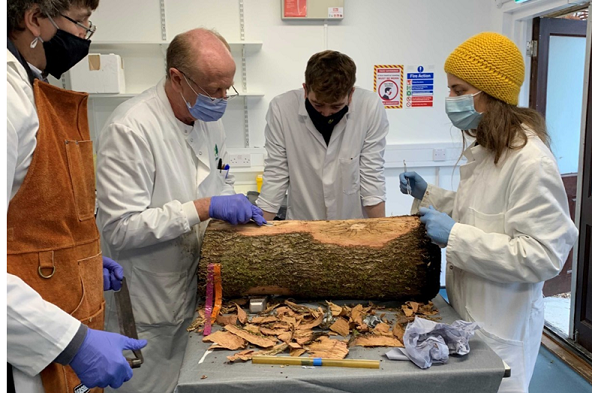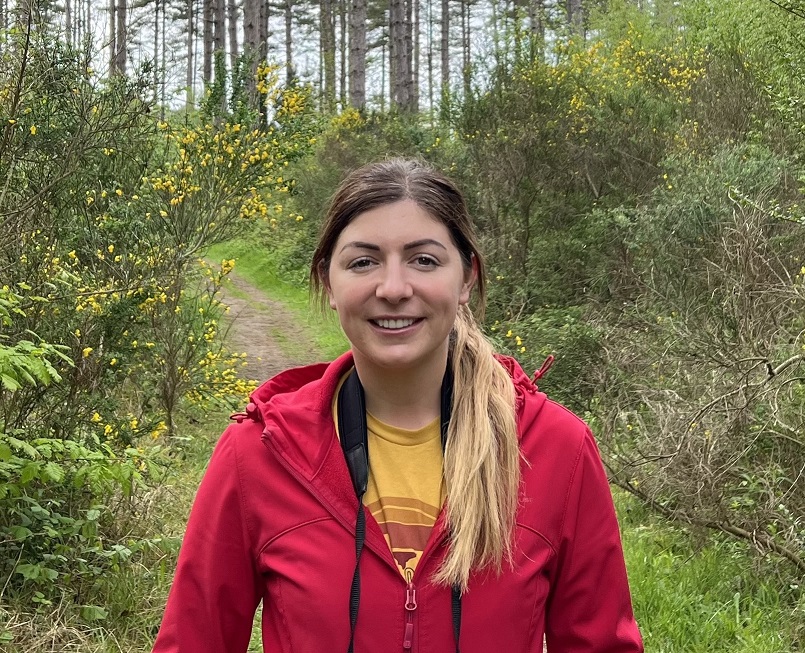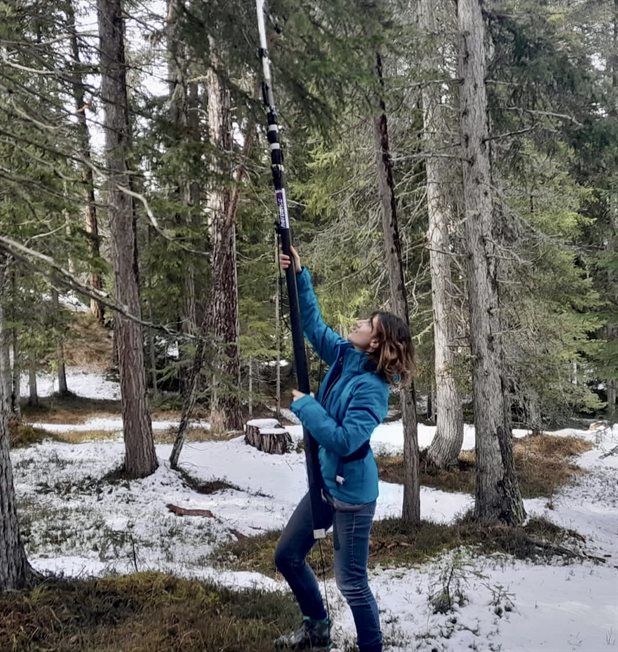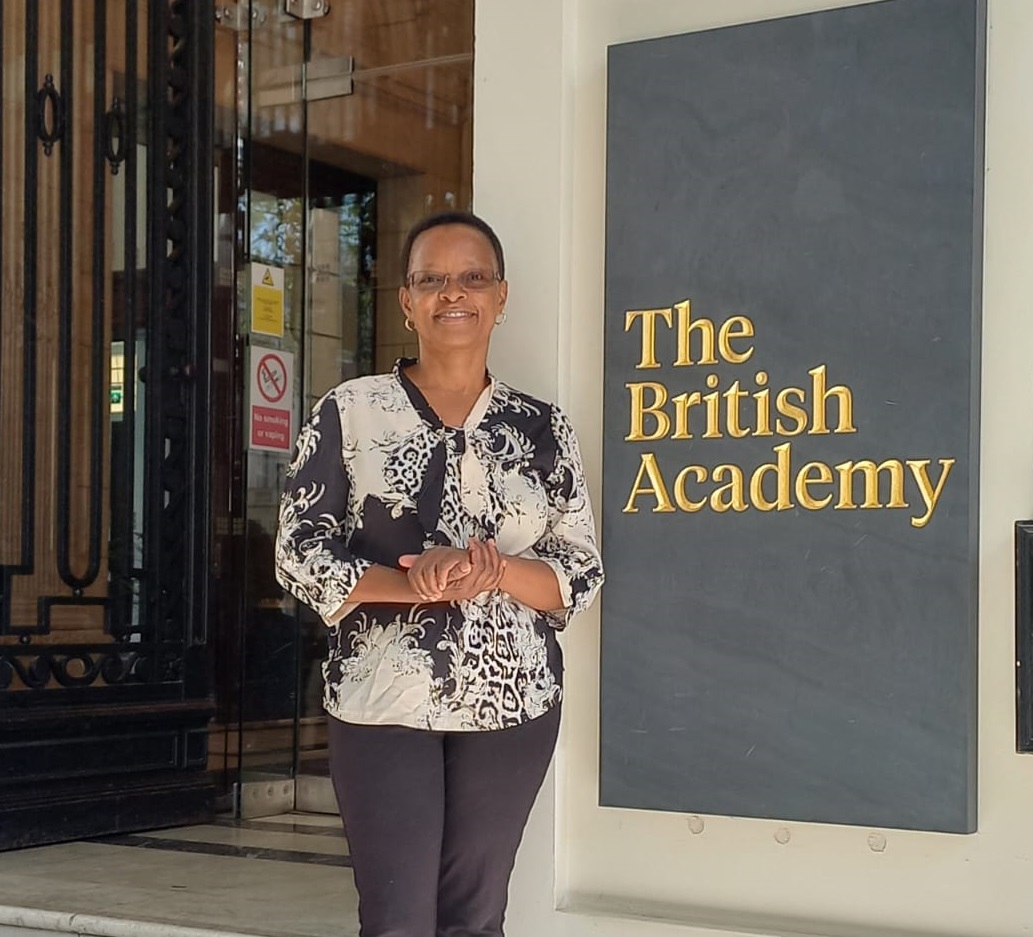A downward spiral: insects, microbes & Acute Oak Decline
by James McDonald and Marine Cambon
Acute Oak Decline (AOD), is a complex disease affecting native oak trees that involves many biotic and abiotic factors. AOD incidence and severity has increased over the last 10 years, however the cause of this increase in disease is still very poorly understood. Trees with AOD can develop bleeding wounds (a tell-tale sign of AOD infection) that are caused by the growth of three primary bacterial pathogens, and the larvae of the bark-boring beetle, Agrilus biguttatus. While identifying the disease causing agents was an important first step, we are left with many questions, for example; What factors make a tree susceptible to these pathogens? A previous study from our group showed that one of the bacterial pathogens, Brenneria goodwinii, becomes more virulent when trees are infected with the beetle larvae. To take the further we observed and categorised the chemical signals that the beetle produces when grown in oak wood and tested their impact on the bacteria. This work showed that several chemical compounds produced by the Agrilus larvae do positively impact the pathogens growth and pathogenicity. This work is important because it is the first evidence that bacteria can receive chemical signals from insects, and it supports the conclusion that the beetle and bacteria are working together to cause disease. It leads to several new exciting areas of research looking at the evolution of cross kingdom interactions and tree disease.

Image above (l-r): John Caulfield, Michael Crampton, Gareth Thomas and Marine Cambon performing “log surgery.” Image credit Jozsef Vuts
Welcome
Dr Liling Chang, Assistant Professor, responses of terrestrial ecosystems to climate change, elevated atmospheric CO2 and disturbance events.
Dr Joe He, postdoctoral research with MEMBRA project.

Dr Anna Gardner
Early–career Synthesis Researcher, BIFoR FACE. Integrating FACE data into models of carbon assimilation, exploring stress scenarios, quantifying uncertainty, and upscaling predictions.

Dr Alice Gauthey
Royal Society Research Fellow. Alice will investigate long-term acclimation to elevated carbon dioxide and if this enhances the negative impacts of drought.

Dr Anne Kairu
Newton International Fellow. Anne's research interests are governance of natural resources, carbon offset standards, sustainability and co-management of offset projects.
Congratulations
Dr Kris Hart (BIFoR FACE Operations Manager) won the Papin Prize award for 'Contribution to Infrastructure' at the Higher Education Technician Summit. Also at the University of Birmingham Professional Awards, winners were Thomas Downes (Apprentice of the Year) and Deanne Brettle and Sam Dobbie for the ‘BIFoR in a Box’ STEM resources.
Future Research
Adriane Esquivel Muelbert will be co-investigator for a new NERC-NSF funded project to improve the understanding on the drivers and causes of death of large tropical trees linking between landscape and regional scales. “This research is vital as we are facing an emergency situation” says Adriane in the Nature News Article ‘When will the Amazon hit a tipping point?’
The Ecological Continuity Trust (ECT) continues its generous support to BIFoR FACE with new grants given this year to researchers to prepare samples to send to the Sanger Institute’s BIOSCAN project looking at flying insect biodiversity.
Doctoral Research
Joining us this year are; Rachel Calder (fungal communities), Zachary Chu (biodiversity dynamics), Naya Desai (quantifying ecosystem services from urban trees), Shomari Healey (ecosystem demography modeling), Teddy Hunter (data and music), Rachel Mailes (forest diversity & carbon); Sophie Powell (eCO2 microbial diversity), Andrea Vadillo Dieguez (bacterial cherry canker).
The BIFoR talent pipeline in the forestry / forest sciences continues; we congratulate Drs Sijeh Asuk, Dion Dobrzynski, Kerryn Little, Sophie Mills and Bridget Warren.
New 'First Steps' Guide
Dr
Emma Ferranti has supported the publication of another practical and important resource along with the Trees Design and Action Group (TDAG). The latest in the ’First steps’ series focusses on
First Steps in Urban Water.
There will be a seminar linked to this resource on 15 November 2023. Please visit the
TDAG website for more information.
BIFoR Education
We have just launched, ‘
Future Forests’, a set of resources to help secondary schools mark COP28 and amplify student voice around climate change. A series of curriculum linked lessons encourage pupils to work together to create a ‘solution tree’ that can be added to our 'digital woodland' before being developed into a ‘solution pitch’ to form a message for COP28 and beyond.
BIFoR Conference 2023
The theme of our conference in July was ‘Trees in Time.’ The posters and recordings of many of the talks are still available on our website. The Time Domain graphic (below), that was made for the conference, is now available as a referenceable image. Our next annual meeting will be 3 and 4 July 2024 and our theme is ‘Communities.’

International Conference of Three Societies on Literature and Science
The 10 – 12 April 2024 brings to campus also the inaugural International Conference of Three Societies on Literature and Science. BIFoR will of course be involved, with Prof John Holmes at the helm. Delegates are offered a visit to the BIFoR FACE facility or the Ruskin Land forest site on the 13 April. Registration and call for papers is now open.
A new temporary exhibition by artist
Ben Wigley has launched at the University’s Lapworth Museum.
Hart of the Wood (Ways of the Plant) is a bold new multidisciplinary art and film project that BIFoR members have been working with Ben on. A special event runs on 22 November 2023.
Research Highlight: Elevated carbon dioxide alters photosynthesis, growth & susceptibility to powdery mildew
By Rosa Sanchez Lucas, Carolina Mayoral, Estrella Luna Diez and Mark Raw
We report the effects of elevated atmospheric CO2 on plant growth, photosynthesis and defence in oak seedlings. We provide evidence that elevated CO2 (eCO2) enhances growth and photosynthesis which could be seen as a good thing for the survival of oak seedlings. However, we also observed that eCO2 enhances susceptibility to the biotrophic fungi causing powdery mildew (PM) disease. Thankfully, we have identified a defence elicitor that enhances resistance to this disease and this is not affected to eCO2. Nevertheless, considering that oak trees are keystone trees of our European forests and that their regeneration is threatened by the high susceptibility of oak seedlings to this disease, our results warrant further investigations on the risks of climate change associated with enhanced levels of atmospheric CO2.
BIFoR is celebrating it's tenth anniversary!
The Institute was first set up in late November 2013!
We take this opportunity to remind you that BIFoR is an Institute that brings together research related to forested landscapes from across the Colleges of the University of Birmingham. BIFoR FACE is a research facility within BIFoR.
BIFoR is wider than BIFoR FACE. We hope this newsletter conveys the breadth of research underway.